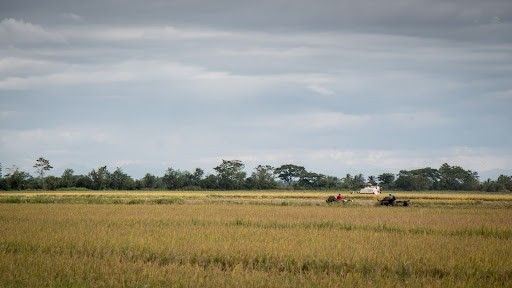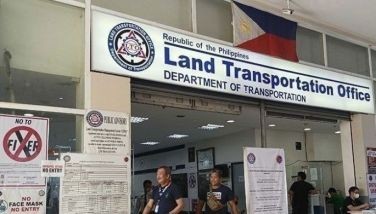Farmers need anticipatory adaptation to survive accelerating climate impacts

NUEVA ECIJA, Philippines — Menard Abalos, a rice farmer in San Jose City, is afraid of storms. While rainfall is vital for the growth of rice, heavy downpour and violent winds unleashed by tropical cyclones wreak havoc on crops.
Abalos lives in Nueva Ecija, the country’s leading rice-producing province.
“‘Yung ulan saka bagyo talaga ang kinatatakutan ng magbubukid lalo pag maganda sanang nakatayo ‘yung palay, nagpapalabas pa lang ng uhay. Kapag may bagyong dumarating, hinahampas ng hangin,” he said.
(The rain and storms are what farmers fear most, especially when the rice is growing well and the stalks are up. When a storm comes, the wind flattens the rice.)
Extreme weather events driven by climate change make life harder for millions of small-scale farmers in the Philippines like Abalos. And as the planet continues to warm, scientists predict more frequent and intense floods, storms and droughts.
Climate shocks
In the Philippines, agriculture remains a major sector, contributing to approximately 12% of the country’s gross domestic product.
The sector also provides employment to around 32% of the country’s population. A large majority of Filipino farmers operate at the subsistence, small-scale level.
Human-induced climate change is already disrupting crop productivity and compromising food security for millions of Filipinos, according to Alicia Ilaga, director of the Department of Agriculture’s Climate Resilient Agriculture Office.
“When we talk about losses and damages in production or reduced production, pagkain na sana natin, naging bato pa (that would have been food but turned into nothing). And then there is the destruction of support facilities, storage, farm to market roads. ‘Yung iba naaanod at nababaha (Some are destroyed by the flooding),” Ilaga said.
The Philippines is battered by around 20 tropical cyclone every year, and aid groups say the poverty-stricken communities—which include farmers and their families—are disproportionately affected.
Meanwhile, during the dry season, farmers cough up money for irrigation needs.
“Minsan kinakapos na lalo pag walang ulan kasi ang irrigation nanggagaling sa dam,” Abalos said.
(Sometimes, we run out of money, especially when there is no rain. Because the irrigation water comes from the dam).
He said they sometimes have to rent water pumps to irrigate the fields better.
Ilaga also said that higher temperature will also increase spoilage.
“Pag mainit o may drought (When it is too hot, or when there is a drought), there is increase in incidents of pests and diseases. These all contribute to decrease in production, decrease in productivity in agriculture and fisheries sector,” she said.
Outsmarting climate change
For Ilaga, anticipatory adaptation is the name of the game.
“We have to outsmart climate change. We have to do anticipatory adaption para di tayo pulutin sa kangkungan (so we don't end up with nothing),” she said.
The agriculture official said the department is already delivering accurate and timely climate information to farmers and fishers, and training them to use climate-based farm advisories.
To reduce the impacts of climate change on agriculture, the DA is also implementing crop diversification practices. Crop diversification refers to the addition of new crops or cropping systems to agricultural production in an area.
The department also has an Adaptation and Mitigation Initiative (AMIA) program, its flagship initiative for climate change adaptation and mitigation. The program envisions that all communities in the country “would become resilient to the increasing adverse effects of climate change.”
A vital component of the push is the creation of model communities called AMIA villages, which would serve as go-to places for other communities to learn from and emulate, and where technological and institutional innovations are introduced.
Currently, there are 116 AMIA villages set up in 34 sites across the country. Aliga said there are documented increase in productivity and income in the model communities.
Ways to adapt
Whatever happens, farmers will find ways to survive and thrive, as they always have, Reynaldo Mariano, a rice farmer in Zaragoza town, said.
Members of Ugat-Uhay Farmers Association, the farmer group which he leads, use “kwebo”—a low-cost, climate-resilient farm structure developed by the Philippine Rice Research Institute—to grow mushrooms.
Farmers also plant protein-rich mung bean or munggo after harvesting rice crops.
“Kung ano man ang dumating, kailangang gumawa ng paraan para makabuhay kami. Hindi naman uubrang pabayaan na lang,” he said.
(Whatever comes, we need to find a way to survive. We cannot just do nothing and let things be.)
- Latest
- Trending
































